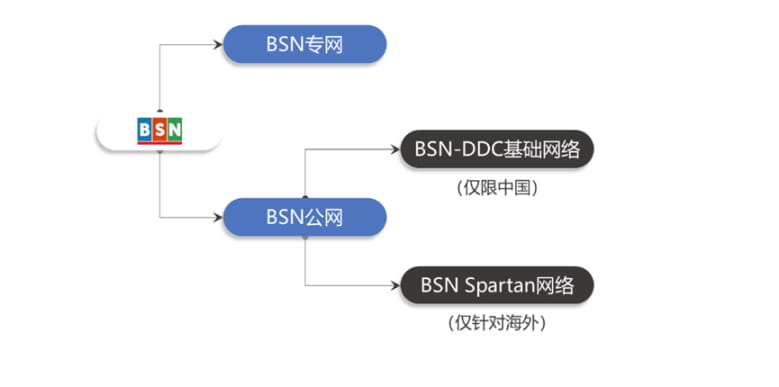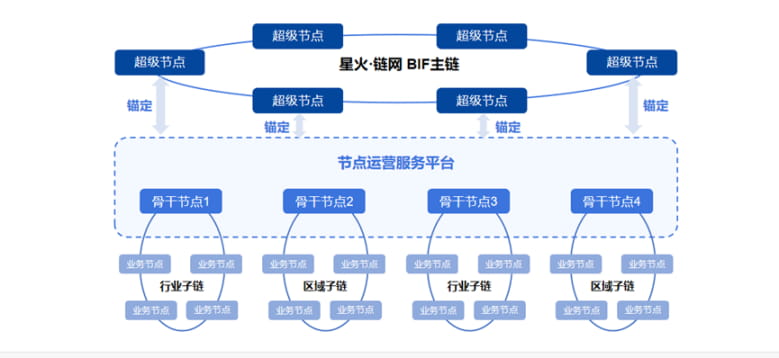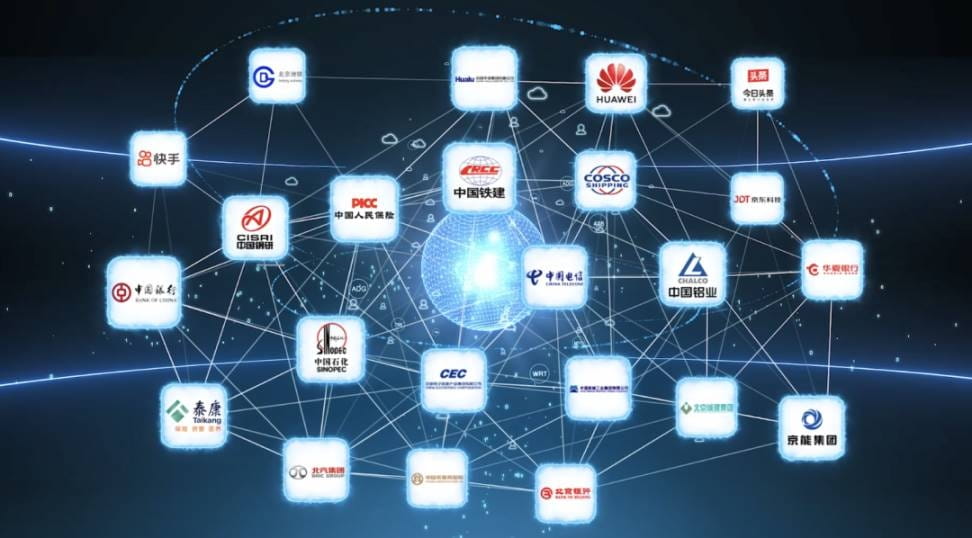Written by: Frank, PANews
Stablecoins are becoming a strategic new race for major economies worldwide, with the United States, the European Union, and Hong Kong competing to introduce regulatory frameworks to seize the initiative. However, the issuance of any stablecoin relies on a key underlying infrastructure—public chains.
Against this background, the industry viewpoint that 'China currently has no globally influential public chain and should be led by central state-owned enterprises' has sparked heated discussion. This viewpoint is not unfounded but also tends to overlook a fact: since blockchain was elevated to a national strategy level in 2016, a blockchain infrastructure network led by the 'national team' aimed at serving the real economy has already taken shape.
From the global connector BSN, the industrial foundation 'Xinghuo Chain Network', to the technological cornerstone 'Chang'an Chain', and then to the exceptional public chain 'Shitu Chain' (Conflux), they collectively form China's unique blockchain landscape. As the demand for stablecoins becomes increasingly urgent, among these networks, who is most likely to break through and become the trust foundation for China's stablecoin vision, aimed at the global market?
To accurately understand China's strategic intentions, it is necessary to redefine the term 'public chain' in the Chinese context. Directly equating it with permissionless chains will lead to serious conceptual deviations. In China, the 'public chains' promoted at the national level are essentially closer to a 'public infrastructure' or 'trust infrastructure' that is guided by the state and allows multiple parties to participate while being ultimately controllable.
Among these, the several that currently have a higher influence in the industry are the Blockchain Service Network (BSN), Xinghuo Chain Network, 'Chang'an Chain', and the public chain Conflux, which has recently sparked discussion. PANews conducts a review and analysis of these blockchain networks to see who is more likely to become the foundation for China's stablecoin.
Blockchain Service Network (BSN): Multi-framework adaptation, focusing on a non-token concept.
In 2018, BSN was jointly initiated by the National Information Center, China Mobile, China UnionPay, and Beijing Hongzao Technology, and is a blockchain public infrastructure. It currently consists of BSN private networks and BSN public networks, where the BSN private network primarily serves enterprises, primarily through the 'BSN Distributed Cloud Management Platform', supporting deployment in various physical IDC data centers, public clouds, and private clouds to establish a blockchain-based distributed cloud system environment.

The BSN public network tends to align more with the concepts of public chains and alliance chains that we are familiar with. In the BSN public network system, it is divided into the BSN-DDC basic network (targeting China's open alliance chains) and the BSN Spartan network (a public distributed cloud service network consisting of non-token public chains) that targets overseas markets.
Currently, within the DDC network system, there are several open alliance chains, including Yan'an Chain, Wenchang Chain, Tai'an Chain, Wuhan Chain, and China Mobile Chain. These networks use frameworks such as Ethereum, EOS, FISCO BCOS, and Corda. The main application scenarios include NFT (digital collectibles), distributed domain names, distributed identity (DID), and trustworthy data preservation. The DDC network system is an alliance chain system without token design, and on-chain service fees need to be recharged through fiat currency, targeting the domestic market.
The consensus mechanism of the BSN Spartan network is more aligned with public chains like Ethereum, but the difference is that it is a non-token public chain. BSN Spartan currently consists of three sub-chains based on Ethereum, Cosmos, and PolygonEdge. As of August 4, the daily transaction volumes of these three chains were 1,068, 844, and 938 transactions, respectively.
Overall, the core innovation of BSN lies in multi-framework adaptation, with the ability to uniformly adapt and manage dozens of mainstream blockchain underlying frameworks (including alliance chains and public chains) globally. Through a standardized adaptation mechanism, developers can 'plug and play' to choose different underlying chains without worrying about the complex deployment and operational details, akin to a universal 'operating system' for the blockchain world. However, the lack of an open Token mechanism may become a constraint in light of the growing demand for stablecoins. He Yifan, the CEO of Hongzao Technology and an executive council member of the BSN Development Alliance, has previously stated that he is extremely averse to virtual currencies, believing that virtual currencies are a massive Ponzi scheme.
'Xinghuo Chain Network': Supported by the Ministry of Industry and Information Technology, focusing on the industrial sector.
According to official information, 'Xinghuo Chain Network' is a national-level blockchain new-type integrated infrastructure system led by the Ministry of Industry and Information Technology, jointly constructed by the China Academy of Information and Communications Technology and several large enterprises and institutions such as Beihang University, Beijing University of Posts and Telecommunications, and China Unicom.
From an architectural perspective, 'Xinghuo Chain Network' is divided into two layers, the first layer is the main chain composed of supernodes, used for managing identifiers, public data, or other legal assets and regulations that the state may provide in the future. The second layer is composed of subchains linked by backbone nodes, connecting various applications in specific industries or regions.

It is worth noting that 'Xinghuo Chain Network' is a permissioned public blockchain network, and from the current information, it also does not have a token design. Similarly, 'Xinghuo Chain Network' is divided into a domestic network mainnet and an international version called ASTRON. Currently, the supernodes established for 'Xinghuo Chain Network' include Xiamen and Liuzhou; backbone nodes include Jiaozhou, Hengqin, and Suzhou; and international nodes include Malaysia and Macau. The node admission threshold for 'Xinghuo Chain Network' is relatively high and requires the promotion of local governments.
'Xinghuo Chain Network' has its application scenarios highly focused on the industrial sector, including: full lifecycle traceability of high-end manufacturing products, collaborative management of complex supply chains, digital identity authentication and predictive maintenance of industrial equipment, as well as trustworthy sharing and trading of industrial data.
Chang'an Chain (ChainMaker): Frequently included in policy planning, with participation from state-owned enterprises and Internet giants.
'Chang'an Chain' is led by the Chang'an Chain Ecological Alliance, which is spearheaded by the Beijing Microchip Blockchain and Edge Computing Research Institute (referred to as 'Microchip Institute') under the guidance and support of the Beijing municipal government.
The Chang'an Chain ecological alliance covers key areas involving central state-owned enterprises such as the State Grid, China Construction Bank, Industrial and Commercial Bank of China, China Unicom, COFCO Group, and Internet giants like Tencent and Baidu. Currently, the alliance has more than 50 members.

In November 2021, 'Chang'an Chain' was written into the '14th Five-Year Plan' for the international scientific and technological innovation construction in Beijing. In January 2022, 'Chang'an Chain' was included in the Beijing municipal government work report. In 2025 (in the 'Beijing Blockchain Innovation Application Development Action Plan (2025-2027)'), 'Chang'an Chain' is mentioned again.
In addition to its strong background, 'Chang'an Chain' also has obvious technological advantages. The official claims that its transaction throughput capability (TPS) can reach 100,000 levels, which can meet the high concurrency needs of large-scale financial and governmental scenarios.
Shitu Chain (Conflux): Built by the Tsinghua 'Yao Class' team, the only public chain in mainland China that issues tokens.
Unlike the aforementioned blockchain networks with obvious alliance chain characteristics, Shitu Chain is currently the only public chain in mainland China that complies with regulatory requirements. Shitu Chain was founded in 2018 by Long Fan, a graduate of the 'Yao Class' at Tsinghua University, and academician Yao Qizhi serves as the chief scientist, participating in the theoretical design of core algorithms. In January 2020, the Conflux team officially established the Shanghai Shitu Blockchain Research Institute in Shanghai. In October of the same year, the Conflux Shitu Blockchain mainnet was officially launched.
As a complete public chain, Shitu Chain also has the governance token CFX. Although mainland China has strict regulatory policies on cryptocurrencies, Conflux successfully issued and operated its token CFX, making it a unique 'exception'.
As a global cryptocurrency asset, CFX has been listed on several mainstream cryptocurrency exchanges, such as Binance, OKX, Gate.io, etc. Its market price and market value are influenced by various factors, including technological advances, ecological development, and macro market conditions. For example, recent favorable news regarding the Conflux 3.0 upgrade and support for offshore RMB stablecoin plans has led to a significant short-term increase in its token price.

In addition, the endorsement situation of Shitu Chain is also not to be underestimated, as it has received multiple reports from mainstream official media such as the People's Daily and has deep cooperation with several central enterprises such as China Telecom and China Mobile. Moreover, Shitu Chain is collaborating with the fintech company AnchorX to explore the issuance of a stablecoin pegged to the offshore RMB (AxCNH) to support the cross-border payment needs of countries along the 'Belt and Road'.
Who is more likely to become the technological foundation for stablecoins?
In addition to the aforementioned blockchain networks with strong endorsements, there are also several alliance chains in China, such as State Grid Chain (State Grid), Unicom Chain (China Unicom), China Mobile Chain (China Mobile), Industrial Bank Chain (Industrial and Commercial Bank of China), Ant Chain (Ant Group), Zhi Xin Chain (Tencent), and Zhongxiang Chain Network, etc. Most of these alliance chains are also initiated by central state-owned enterprises or tech giants, each having unique advantages and influence within their respective domains.
But returning to the initial topic, does China have a public chain with international influence? As of now, the answer should be that it is lacking. The main reason is that most of China's blockchain networks are mechanism-wise alliance chains, with significant differences in consensus mechanisms and economic models compared to overseas public chains like Ethereum and Solana.
Among the existing public chain infrastructures, the one most likely to grow into an internationally recognized domestic public chain is 'Shitu Chain'. From a technical perspective, 'Shitu Chain' has the characteristics of an internationally accepted public chain, and it possesses originality and performance advantages in technology. Its official background and clear exploration plan for offshore RMB stablecoins give it a first-mover advantage in the stablecoin sector.
Among other blockchain networks, 'Chang'an Chain' can also serve as the underlying architecture for stablecoin issuance. In 2021, its research institution, the Microchip Institute, signed a strategic cooperation agreement with the central bank's research institute to jointly promote enterprise-level applications of digital RMB based on 'Chang'an Chain'. In addition, the technical characteristics of 'Chang'an Chain' can also support token design, meeting the technical requirements for stablecoin issuance. Its strong central state-owned enterprise ecosystem gives it a natural advantage in promoting stablecoin applications in institutional or specific scenarios.
Of course, in addition to this, as listed companies in several European and American countries begin to treat cryptocurrencies as treasury assets and participate in the governance of public chains, there may be a third option for China's public chain, which is to participate in the governance of internationally mainstream public chains. After all, in a decentralized world, the distinction of national borders often only represents a difference in computing power percentages.


